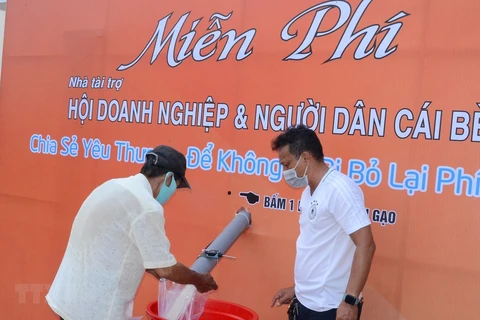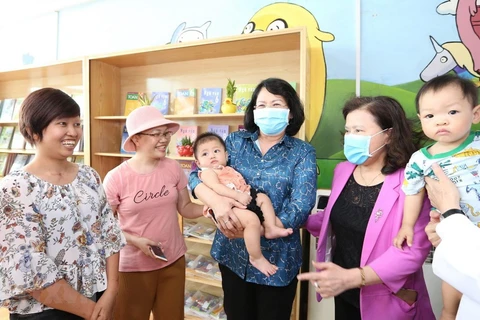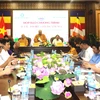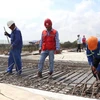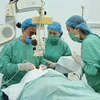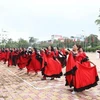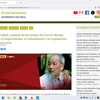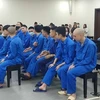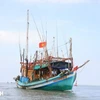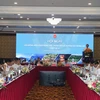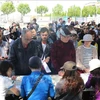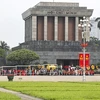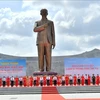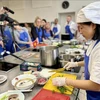 At the event. Vice State President Dang Thi Ngoc Thinh stand at the fifth place from right (Photo: VNA)
At the event. Vice State President Dang Thi Ngoc Thinh stand at the fifth place from right (Photo: VNA) Quang Nam (VNA) - Vice State President Dang Thi Ngoc Thinh visited students at the Kim Dong Primary School in the central province of Quang Nam’s Bac Tra My district on June 1 and presented them with milk boxes as gifts.
Taking place on the occasion of International Children’s Day, the visit marked the first milk boxes from the national School Milk Project reaching children in the province’s mountainous areas.
From June 1, more than 33,000 students in 575 kindergartens and primary schools across Quang Nam’s six mountainous districts - Bac Tra My, Nam Tra My, Dong Giang, Nam Giang, Tay Giang, and Phuoc Son - will receive a free milk box every day at school.
Ho Quang Buu, Vice Chairman of the provincial People’s Committee, said the school milk project in the six districts costs 110 billion VND (4.7 million USD).
Quang Nam has close to 362,000 children, Buu said, accounting for more than 23 percent of its population. The rate of kids with disadvantaged backgrounds stood at 5.28 percent in 2019.
Vice President Thinh, who is also Chair of the Council of the National Fund for Vietnamese Children, presented 3 billion VND from the fund to Bac Tra My authorities to support the construction of boarding houses.
The School Milk Project, jointly funded by the Government, parents, and milk producer Vinamilk, aims to improve the nutritional status of preschool and primary children through daily milk supplies, cutting malnutrition, raising the stature and physical strength of Vietnamese children, and contributing to the development of future human resources.
The State and Vinamilk cover 53 percent of the cost, while families cover 47 percent. The project covers all costs for poor and ethnic minority children./.
VNA

